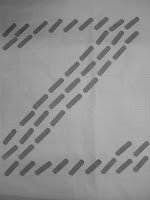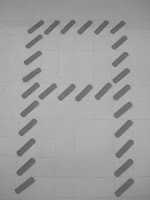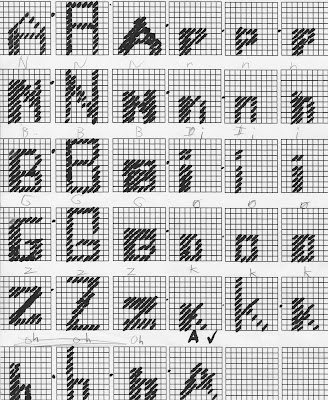Thursday, September 30, 2010
Sunday, September 26, 2010
Color Reactions
Bright Red 186
Positive - Bright, Aggressive, Passionate, Basic, Intense
Negative - Intense, Aggressive, Blood, Fiery, Angry
Vibrant Orange 1585
Positive - Vibrant, Warm, Happy
Negative - Fiery, Intense
Bright Yellow 116
Positive - Happy, Energetic, Bright, Sunny
Negative - obnoxious, bright,
Earth Brown 438
Positive - Earthy, Grounded, Natural
Negative - Dirty, Grundgy
Deep Blue 2746
Positive- Regal, Royal, Watery, Bold
Negative - Bold, Dark, Heavy
Chartreuse Green 584
Positive- Pleasing, warm, vibratory
Negative - Vibratory, bright
Blue Purple 267
Positive - Grape, Royal, Tasty
Negative - none really, Heavy?
Charcoal Grey 425
Positive - Neutral, Unemotional
Negative - Cold, Heavy, Rainy, Foggy, Grungy, ash-like
White
Positive - Clean, Pure, Light
Negative - Stark, Boring, Bright
Black
Positive - Dark, Neutral
Negative - Dark, Heavy
Positive - Bright, Aggressive, Passionate, Basic, Intense
Negative - Intense, Aggressive, Blood, Fiery, Angry
Vibrant Orange 1585
Positive - Vibrant, Warm, Happy
Negative - Fiery, Intense
Bright Yellow 116
Positive - Happy, Energetic, Bright, Sunny
Negative - obnoxious, bright,
Earth Brown 438
Positive - Earthy, Grounded, Natural
Negative - Dirty, Grundgy
Deep Blue 2746
Positive- Regal, Royal, Watery, Bold
Negative - Bold, Dark, Heavy
Chartreuse Green 584
Positive- Pleasing, warm, vibratory
Negative - Vibratory, bright
Blue Purple 267
Positive - Grape, Royal, Tasty
Negative - none really, Heavy?
Charcoal Grey 425
Positive - Neutral, Unemotional
Negative - Cold, Heavy, Rainy, Foggy, Grungy, ash-like
White
Positive - Clean, Pure, Light
Negative - Stark, Boring, Bright
Black
Positive - Dark, Neutral
Negative - Dark, Heavy
Friday, September 24, 2010
Progress Report #4 - Final Process
VICTORY!
My greatest creation! (maybe)
I'm not going to lie at all...this was a difficult first project. I've made my errors (although I'm not going to point all of them out...that would be dumb and counterproductive), and I'm pretty tired...but as far as the aesthetics of my book...I'm proud of them even if I fell short on craft.
I felt the starkness of my book "Opposing Fronts: Ideas and Dissent on the Battlefield" reflected its WAR theme well. The black an white interior was perfect for it, and was simpler to manage then if i had used colors. Most of my imagery was copied or copy friendly for b/w,
With the cover, I was happy I listened to Marty and was able to let go of the green and let the simple color and composition speak for itself (the back cover is green to compensate)
I'll probably look at this with mild embarrassment when I'm older, but for now, I feel I accomplished something good...maybe not great...but a good stepping stone for future endeavors.
My moment of serendipity was with my "glorious" composition (shown above), with the side by side compositions of dots and type. It accidentally resembled explosions or fireworks, both of which really hit home with the theme. Also a terrible mistake with the last composition actually did something awesome with the ending! I put my type comp backwards...but it made it a spread at the end! It expands out the force of the "destruction"! I'm so happy that it worked despite my criminal stupidity.
Its going to be nerve racked tommo-.... later today giving this presentation. But I'm proud and I love my compositions.
PAGE NOTES
Cover - fundamental principles
Organized - Imagery - Gritty/ black and white
Brutal - Type - Brutal and Harsh
Glorious - Serendipity - Explosions/Fireworks
DESIGN NOTES
Cover - Continuation - The words form a chevron
Organized - Alignment - The dots form a grid
Aggressive - Scale - The smaller words propel the bigger ones
Defensive - Proximity - the closeness of the dots communicates intent
Combative - Asymmetry - The composition is thrown off balance for energy protrayel
Invasive - Framing - The smaller words invade the A of invasive
Brutal - Scale - Brutality against a smaller dot by larger ones
Glorious - continuation - The "rays" extend outward
Destruction - layers- Representing parts being blown away
With Dot and Image compositions, its interesting how the limitations placed by both parts create a message greater then the parts. By framing images in dots, it destroys the image as itself and focuses on one part. Its cropping visually and conceptually. The dots also convey a feeling of universality that is difficult to do with other objects. Dots are Dots are Dots are Dots...there's not that much that can be construed from a dot other then itself, creating less confused meaning.
With the images, there's a very fine selection that must be made within a larger picture to find the most relevant parts and cull off the chaff in a picture. There's a thousand words in a picture....we're only trying to describe one. That refinement is very important in the overall composition
The book form is also very universal, in that all of them have the same purpose (to communicate information). That being said, they very rarely communicate the same information, and even if they did they wouldn't say it the same way. Its very personalized in a way....but books must still communicate. Its a delicate balancing act, but that balance can be what really communicates beauty
Monday, September 20, 2010
NASA Logo History
NASA LOGO DESIGNER HISTORY
The History of the NASA logo has not only stylistic and practical aspects but also includes some humorous anecdotes as well. The logo was designed as a replacement for the old NACA (National Advisory Committee on Aeronautics) logo. After an illustrator in NASA’s Lewis Research Center created the seal for the organization, the head of that division, James Modarelli, was tasked by NASA to design a logo that was simpler and could be used for less formal purposes. He did that while adding several elements representative of both the space travel aspect of NASA’s work, and the less glamorous aeronautical purposes of the administration.
He simplified the seal, leaving only the white stars and orbital path and setting them upon a perfect blue circle and a red sweeping airfoil. Then, he added the signature white NASA lettering. Each part of the logo represents a different aspect of the work that NASA does. The stars are...stars, representing space. The white orbit represents the type of maneuvers that NASA spacecraft would make, especially in the early days of baby stepping with satellites and one man craft in low orbit. The red chevron is meant to represent a wing, particularly that of the type of hypersonic aircraft. Lastly the blue circle upon which the whole piece is based is representative of a planetary body.
As a logo,, it stayed in use until 1975, when NASA leadership decided to create a more stylized logo for modern times. Nicknamed the "worm", this new logo incorporated wiggling letter forms and nothing else to create a simpler logo. The former logo was the derisively nicknamed the "meatball" after the food and an aircraft landing method using a "meatball" of light reflected off a mirror. Eventually in 1992, NASA Administrator Dan Goldin brought the meatball out of retirement as the main emblem of the organization.
It should be noted that when the emblem was originally created when photocopying was entirely a photographic process. In the age of digital copying and designing the meatball is vary difficult to copy and EXTREMELY difficult to re-size. Even the NASA graphic department employees view this logo as a "design nightmare"
The History of the NASA logo has not only stylistic and practical aspects but also includes some humorous anecdotes as well. The logo was designed as a replacement for the old NACA (National Advisory Committee on Aeronautics) logo. After an illustrator in NASA’s Lewis Research Center created the seal for the organization, the head of that division, James Modarelli, was tasked by NASA to design a logo that was simpler and could be used for less formal purposes. He did that while adding several elements representative of both the space travel aspect of NASA’s work, and the less glamorous aeronautical purposes of the administration.
He simplified the seal, leaving only the white stars and orbital path and setting them upon a perfect blue circle and a red sweeping airfoil. Then, he added the signature white NASA lettering. Each part of the logo represents a different aspect of the work that NASA does. The stars are...stars, representing space. The white orbit represents the type of maneuvers that NASA spacecraft would make, especially in the early days of baby stepping with satellites and one man craft in low orbit. The red chevron is meant to represent a wing, particularly that of the type of hypersonic aircraft. Lastly the blue circle upon which the whole piece is based is representative of a planetary body.
As a logo,, it stayed in use until 1975, when NASA leadership decided to create a more stylized logo for modern times. Nicknamed the "worm", this new logo incorporated wiggling letter forms and nothing else to create a simpler logo. The former logo was the derisively nicknamed the "meatball" after the food and an aircraft landing method using a "meatball" of light reflected off a mirror. Eventually in 1992, NASA Administrator Dan Goldin brought the meatball out of retirement as the main emblem of the organization.
It should be noted that when the emblem was originally created when photocopying was entirely a photographic process. In the age of digital copying and designing the meatball is vary difficult to copy and EXTREMELY difficult to re-size. Even the NASA graphic department employees view this logo as a "design nightmare"
Progress Report #3 - Color Studies
Triadic....It can be primaries too...
Cool Colors
Warm Colors
Analogous Colors
Just plain awesome.....maybe a color scheme....need HALP!
Subscribe to:
Comments (Atom)



















































